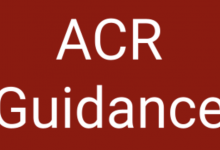Hot Stuff from the Cleveland Clinic Biologic Therapies Summit – Part I Save
Under the direction of Dr. Len Calabrese, the Cleveland Clinic Center for Continuing Education hosted its 6th biennial Biologic Therapies Summit this week (April 30 – May 2, 2015). Below are highlights and take-home messages from several presentations at this conference.
Dr. Stanley Hazen - Gut Microbiota as a Participant and Therapeutic Target in Atherosclerosis and Vascular Inflammation.
Dr. Hazen lectured on “Gut Microbiota as a Participant and Therapeutic Target in Atherosclerosis and Vascular Inflammation”. Gut microbes are integral to nutrition, host defense and immune function. He discussed how gut microbes play a role in the development of atherosclerotic heart disease (ASHD). Much of his work was based on animals (rodents).
-
Transplanting the gut microbiomes from lean or obese mice to lean mice was shown to transplant lean or obese phenotype.
-
Intestinal microbes are mechanistically linked to ASHD. Certain foods are rich in carnitine or possess trimethylamine groups. The latter is oxidized to trimethylamine oxide (TMAO).
-
TMAO is a potent predictor of cardiovascular risk, angiographic CAD, MACE, MI and death.
-
Last year Dr. S Abramson showed RA patients had higher prevotella in their gut microbiome and that prevotella is associated with higher TMAO levels; providing another mechanism whereby RA patients may have worse CV outcomes
-
“There is an obligatory role of gut microbiome in the development of TMAO in rodents” and humans.
-
High carnitine diets (from meat) have more TMAO levels and contribute to atherosclerotic plaques.
-
When comparing meat-eating omnivores to vegans, omnivores made significantly more TMAO after carnitine dietary challenge.
-
The TMAO pathway increases atherosclerotic plaque development and platelet reactivity in the vasculature.
-
He postulated that you can “drug” the host to change the microbiome, thereby changing the CV risk of the individual.
Dr. Peter Lipsky - The Scientific Basis of Drug Repositioning in SLE
Dr. Lipsky lectured on drug repositioning (repurposing) in SLE. He and coworkers developed a scoring method to evaluate currently available therapies and their potential efficacy, biologic effects and safety. This is reported as a COLT score (range -14 to +12) that allows for a quantitative comparison of potential drug candidates for study in lupus. Surprisingly, modest scores ( 6) were seen in common agents like belimumab, hydroxychloroquine and RTX.
-
The highest scoring biologic was ustekinumab: it blocks IL-12/23 and TH1 and TH17 cells and there are rare reports of improvement in CLE and DLE. Based on these findings the Alliance for Lupus Research and Janssen have committed to a randomized trial of ustekinumab in SLE for late 2015.
-
The highest scoring nutraceutical was krill oil. Another RCT is planned for third quarter 2015.
Dr. Artie Kavangaugh – Treat to Target in PsA and SpA
Dr. Kavanaugh reviewed the challenges of adopting a T2T approach in PsA and SpA – including problems of subsets, definitions, and imaging outcomes. This is dealt with, in part, by the GRAPPA treatment recommendations that distinguishes the different approaches for skin vs. peripheral vs. axial and extraarticular subsets within the psoriatic arthritis spectrum.
-
PsA who achieve minimal disease activity have less X-ray damage.
-
TICOPA trial was a 48-week study that showed the superiority of tight control over usual care
Dr. Jon Kay – Can We Stop Biologics Successfully?
Dr. Kay reviewed several key trials that examined the effects of either removing or reducing methotrexate or the biologic in patients with early RA or established RA.
Early RA Withdrawal Trials
-
HIT HARD: looked at whether an induction regimen in treatment-naïve patients would alter outcomes. Patients were given MTX alone or MTX plus TNF therapy (adalimumab) to see what would be the sustained benefits, if any. MTX + TNFi showed a clear clinical benefit for the first 12 months, but sustained X-ray benefits lasted for 24 months.
-
OPTIMA: Similar to HIT HARD, withdrawal of the TNFi did show maintenance of low disease activity, but there was more X-ray progression once the TNFi was withdrawn
-
PRIZE: a trial of MTX + etanercept. Patients achieving low disease activity were randomized to ETN withdrawal (MTX only) or half dose ETN+MTX or full dose ETN+MTX. Patients receiving only MTX flared clinically, while the half dose ETN+MTX did as well as the full dose ETN+MTX.
-
AVERT: after successful treatment with MTX + abatacept, remission was only maintained in a minority of patients off both drugs.
Established RA
-
PRESERVE: MTX nonresponders were given ETN. Reduced ½ dose ETN did same as full dose. Withdrawal of ETN and maintenance of MTX not as effective as being on both agents, including ½ dose ETN. You can lower ETN, but to discontinue altogether would be a bad idea.
-
CERTAIN: Remission is not maintained once certolizumab is withdrawn
-
HONOR : a Japaneses study and ADA was withdrawn from the combination of MTX+ ADA. Most patients did not do well. However, in patients on MTX+ADA who achieved “deep remission” (DAS28 1.98), 79% were able to remain in remission without flare.
It seems clear that it is wiser to withdraw the DMARD or MTX than to stop the biologic or combination. The risk of clinical flare can be reduced in patients who either achieve “deep remission” or those who achieve rapid and early remission. Those who stay on the DMARD and remove the biologic not only will have a loss of efficacy but will have more X-ray progression.
Dr. Vibeke Strand – Immunogenicity and Serum Levels Across IMIDs
Dr. Strand discussed some of the difficulties and limitations of drug levels and antidrug antibodies (ADAb), including variance in assays, patients, renal clearance, etc.
-
ADAb lower serum concentrations, decreased clinical responses and greater infusion reactions.
-
ADAb titers tend to be higher in nonresponders.
-
ADAb can be seen in human (golimumab, adalimumab), humanized and chimeric monoclonal antibody agents.
-
These tests have become commonplace tools for IBD management by gastroenterologists.
Dr. Kay & Dr. Strand gave an Update on Biosimilars
-
Zarxio is the first US biosimilar (Neupogen) to be FDA approved (6 March 2015)
-
Biosimilars must be similar to the reference medicine product in terms of quality, biologic activity, safety and efficacy based on a comprehensive study (European Medicines Agency definition). The FDA definition uses the words safety, purity and potency to define the equivalence of the biosimilar product.
-
There are other variant compounds that seem similar, but do not meet the standards of biosimilars. This includes “biomimics”: replica compounds that are not same as biosimilars and do not meet the standards set by the EMA or FDA. “2nd generation biopharmaceuticals” are developed by the pharma as structurally and, potentially, functionally different compounds with a potential therapeutic advantage. “Generiecs” are small molecules that have identical chemical structure to the reference product.
-
Biosimilar development has become a global activity that will substantially change therapeutics worldwide.
-
Remicade has two biosimilars (Resima and Inflectra). In September 2013, the EMA approved the use of Inflectra. Remsima is now approved by the EMA and Health Canada.
- EMA has had guidelines on biosimilars since 2011. The FDA has been in draft guidance mode since 2012, and has yet to publish a final guidance document on biosimilars.










If you are a health practitioner, you may Login/Register to comment.
Due to the nature of these comment forums, only health practitioners are allowed to comment at this time.